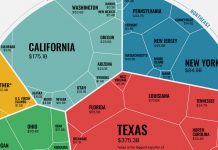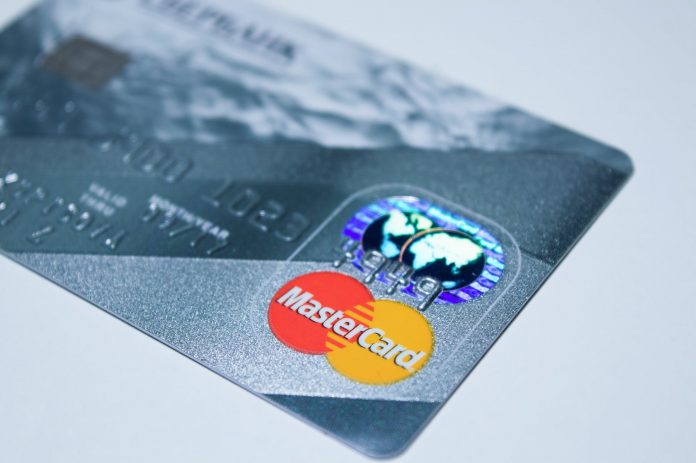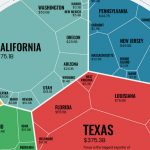To completely see the value in the cutting edge comfort of Mastercards, basically embed your chip card, stop while it measures and consider what it supplanted.
Preceding plastic, cash as a method for trade for labor and products were bulky, if not inside and out hazardous. Starting as far back as 9000 B.C. with steers and camels, cash took some really odd shapes, from cowrie shells, bronze and copper impersonation cowrie shells and gold and silver pieces to Chinese deerskin notes and Native American stringed wampum dabs.
All along, Mastercards offered huge benefits over all types of cash: They’re pocket size, effectively versatile, somewhat get, and have no characteristic worth in themselves. In addition, genuine charge cards get you an opportunity to take care of your bill, ordinarily with a humble expense appended.
The innovation of Visas
As per antiquarian Jonathan Kenoyer, the idea of utilizing a worthless instrument to address banking exchanges goes back 5,000 years, when the antiquated Mesopotamians utilized dirt tablets to direct exchange with the Harappan progress. While still bulky, a chunk of mud with seals from the two developments surely beat the huge loads of copper each would have needed to soften down to create the coins of that period.
In any case, the Visa model has changed since early mankind’s set of experiences:
Around the 1800s: Merchants utilized credit currencies and charge plates to stretch out credit to neighborhood ranchers and farmers until they gathered benefits from harvests.
1964: Charge cards were dispatched by investor John Biggins with the Charg-It card, utilized in a two-block sweep of his bank in New York City. Client buys were sent to his bank and dealers were repaid later in what was known as the “shut circle framework.”
1950: The Diners Club Card appeared when Frank McNamara failed to remember his wallet and couldn’t pay for a business supper. He proposed the possibility of a little cardboard card, which individuals could utilize like a charge card and cover the bill in full each month.
1958: American Express dispatched its first Visa made of cardboard, followed in no time by the principal plastic Visa in 1959.
The innovation of bank cards and rotating credit
Significant banks would before long dispatch their own buyer cards, however with a welcome bend. Rather than clients settling their bill in full every month, bank cards would genuinely become Mastercards by offering spinning credit, which permitted cardholders to convey their month-to-month balance forward for an ostensible money charge.
Bank of America was first out of the door in 1958, mailing spontaneous BankAmericard Visas to choose California markets. In 1966, BankAmericard went public to turn into the country’s initially authorized universally useful Mastercard. It would be renamed Visa 10 years after the fact to recognize its developing worldwide presence.
Likewise in 1966, a gathering of California banks framed the Interbank Card Association (ITC), which would before long issue the country’s subsequent significant bank card, Mastercard. Present-day Mastercard contends straightforwardly with a comparable Visa association, the two of which are controlled by sheets involved essentially of current and previous significant level leaders from large companies.
Dissimilar to their nonbank rivals, the bank card affiliations work in an “open-circle” framework that requires interbank participation, just as moves of assets. While banks at first needed to pick either the Visa and Mastercard affiliation, changes to affiliation ordinances have since permitted banks to join the two affiliations and issue the two kinds of cards to their clients.
See related: How does a charge card exchange work?
Guideline and suit
As the notoriety of bank and nonbank Visas detonated during the 1970s, so did enactment that pointed toward tending to shopper protests against this quickly developing industry. Among the administrative course amendments:
The Fair Credit Reporting Act of 1970 limited the assortment and utilization of credit report information.
The Unsolicited Credit Card Act of 1970 disallowed guarantors from sending dynamic cards to clients who hadn’t mentioned them.
The Fair Credit Billing Act of 1974 changed the Truth in Lending Act to get control over oppressive charging rehearses and empower customers to question charging mistakes.
Additionally in 1974, the Equal Credit Opportunity Act was passed, denying banks to victimize any candidate dependent on sex, race, conjugal status, public beginning or religion.
The Fair Debt Collection Practices Act of 1977 changed the Consumer Credit Protection Act to forbid savage obligation assortment rehearses and modify the indebted person’s bill of rights.
The Credit CARD Act of 2009 added buyer security as restrictions on Mastercard financing costs, expenses, and charges set on cardholders’ records.
The introduction of the Sears Corporation’s Discover Card at the 1986 Super Bowl brought about a significant case when Discover recorded an antitrust suit against Mastercard and Visa for unlawfully forestalling their affiliation banks from giving Discover cards. The six-year prosecution finished in 2004 when the U.S. High Court declined to hear the respondents’ allure, successfully permitting banks and other card guarantors to give various card brands.
Section of the Credit Card Accountability, Responsibility, and Disclosure Act of 2009, also known as the Credit CARD Act, given more noteworthy straightforwardness to purchasers and wiped out or decreased a scope of card backer offenses including loan cost climbs, late expenses, and over-limit charges in the profundities of the Great Recession.
Mechanical development and change
Since the mid-1960s, when IBM presented attractive stripe (or “mag-stripe”) confirmation to charge cards, mechanical developments have incidentally taken the middle of everyone’s attention in the credit-only installment play.
In 2002, personalization acquired a footing
Be that as it may, some mechanical changes have arisen as guidelines. While by far most of the Visas actually have a 1960s-period attractive stripe, cards that incorporate a CPU, noticeable on the facade of the card, are currently standard. Here is the way Mastercards changed in innovation throughout the long term:
The 1980s: The principal shrewd chip-empowered Visa was made and became famous all through Europe, in any event, showing up in the 1995 film “French Kiss.”
1996: Europay, Mastercard, and Visa co-distributed the standard keen chip particulars, called EMV chips. These chip-empowered cards enjoy the benefit of utilizing scrambled correspondence instead of depending on a decoded attractive stripe that is not difficult to peruse and duplicate onto a false card, also called cloning.
2005: Radio-recurrence recognizable proof (RFID) was first explored in different avenues regarding utilizing a Samsung NFC cell phone for specific shops and retailers in Caen, France.
January 2010: Barclay and Orange cooperated to dispatch a contactless installment card. This innovation permits you to finish an exchange by tapping your card against a viable terminal and provisions comparative encryption to EMV shrewd chips.
September 2014: Apple Pay first deliveries, permitting cardholders to stack their data on their cell phone and leave their cards at home.
September 2015: Following Apple’s suit, Google dispatches its own contactless telephone wallet framework, Android Pay, presently called Google Pay.
October 2015: Retail installments industry went through an obligation shift, making the expenses of deceitful exchanges be borne by the retailer on the off chance that it decides not to redesign its terminals to acknowledge the new cards.
April 2021: Gasoline retailers’ responsibility shift is sanctioned.
The fate of charge cards
What will Mastercards resemble in 25, 50, or 100 years? The organizations that produce plastic and metal charge cards realize that we will not generally need actual antiquity to address our monetary records. Indeed, a significant number of them currently offer virtual Visas upon demand assuming you need an additional degree of safety while you shop.
All things considered, we don’t heft around cards that address the entirety of our credits and ventures. The not-so-distant future probably lies with a more prominent reception of installments empowered by cell phones and other contactless gadgets, even as no standard has risen up out of all the contending advances accessible.
These gadgets function admirably until you go over a shipper’s terminal that isn’t RFID viable. In 2021, there are still a lot of retailers that don’t utilize RFID-viable terminals and a few famous charge cards that aren’t viable with the most well-known versatile installment frameworks.
There are additionally a huge number of shoppers who might in any case preferably pull out their #1 card over attempt to figure in case a retailer’s specific terminal will be viable with their installment framework. As it has with such countless different innovations, when a predominant standard arises, it will look clear to all by and large.
Past radio recurrence empowered cards, telephones, and wearables, the following stage will be installments made utilizing biometric approval, like fingerprints, iris sweeps, and facial acknowledgment. Notwithstanding challenges actually remain. While you can undoubtedly get another record number if your Visa’s data is taken, it isn’t so natural with biometrics. You can’t change your fingerprints or the example of the veins in your eyes in the event that somebody takes that information.
See related: How to shield yourself from Mastercard misrepresentation
Cards change, however, accounts are immortal
Based on the progressions we see around us today – from quickly advancing on the web and portable installment advancements to home machines that screen and carefully reorder their own substance – card installments will be progressively incorporated into our lives in new and imaginative manners. Similarly, as we make buys with web empowered gadgets from organizations like Amazon and Google, maybe we’ll make buys through our vehicles, our coolers, and toaster ovens.
In any case, what keeps on leftover generally the equivalent is your Visa account, paying little heed to which actual gadget, assuming any, is appended to it. Mastercard accounts





































